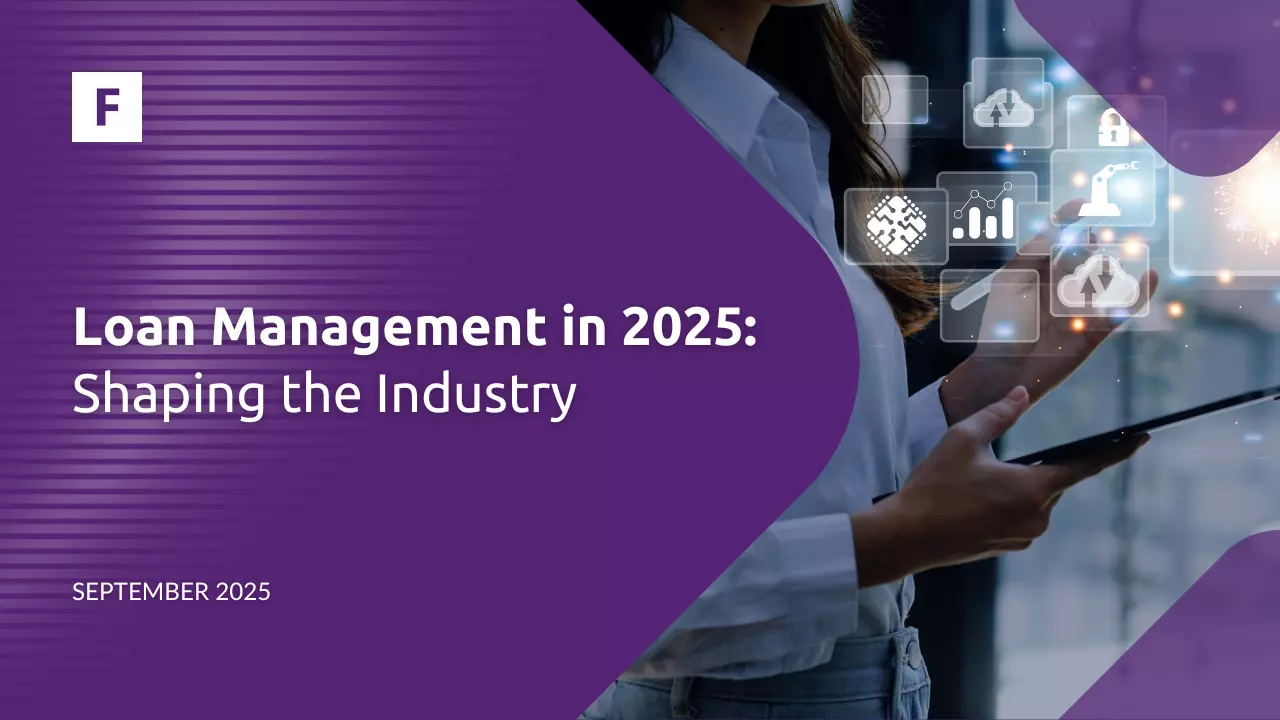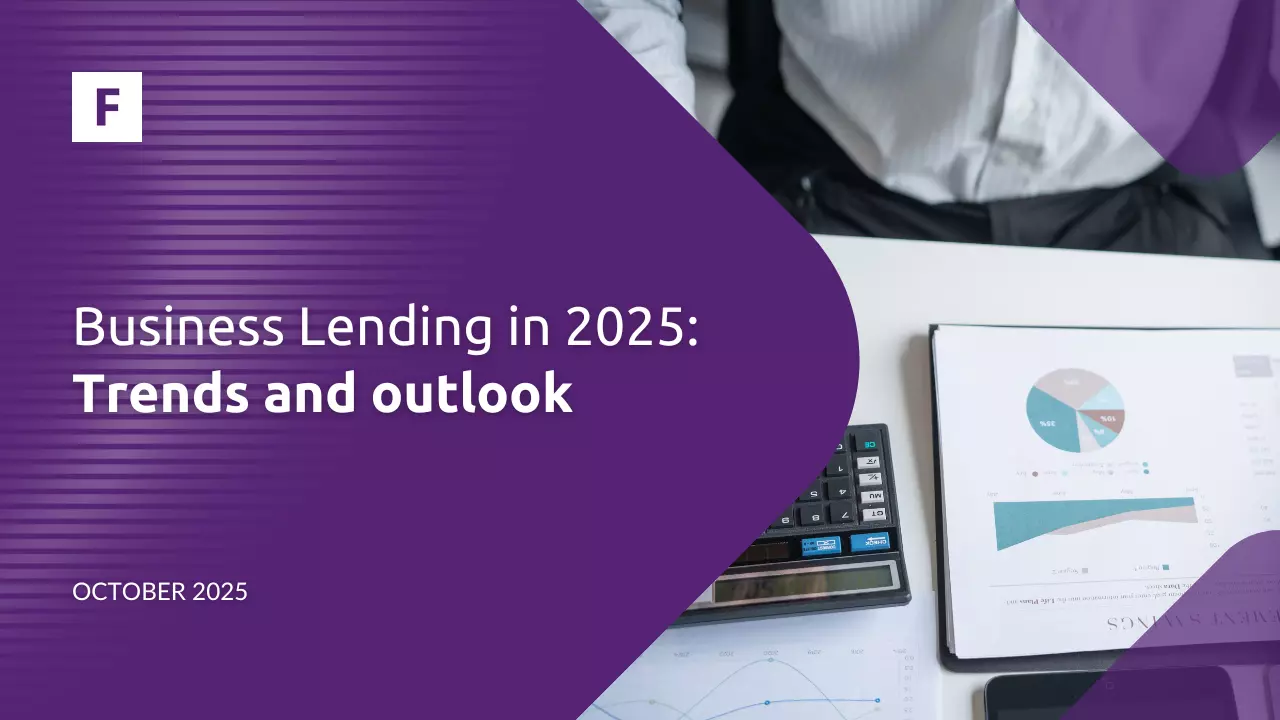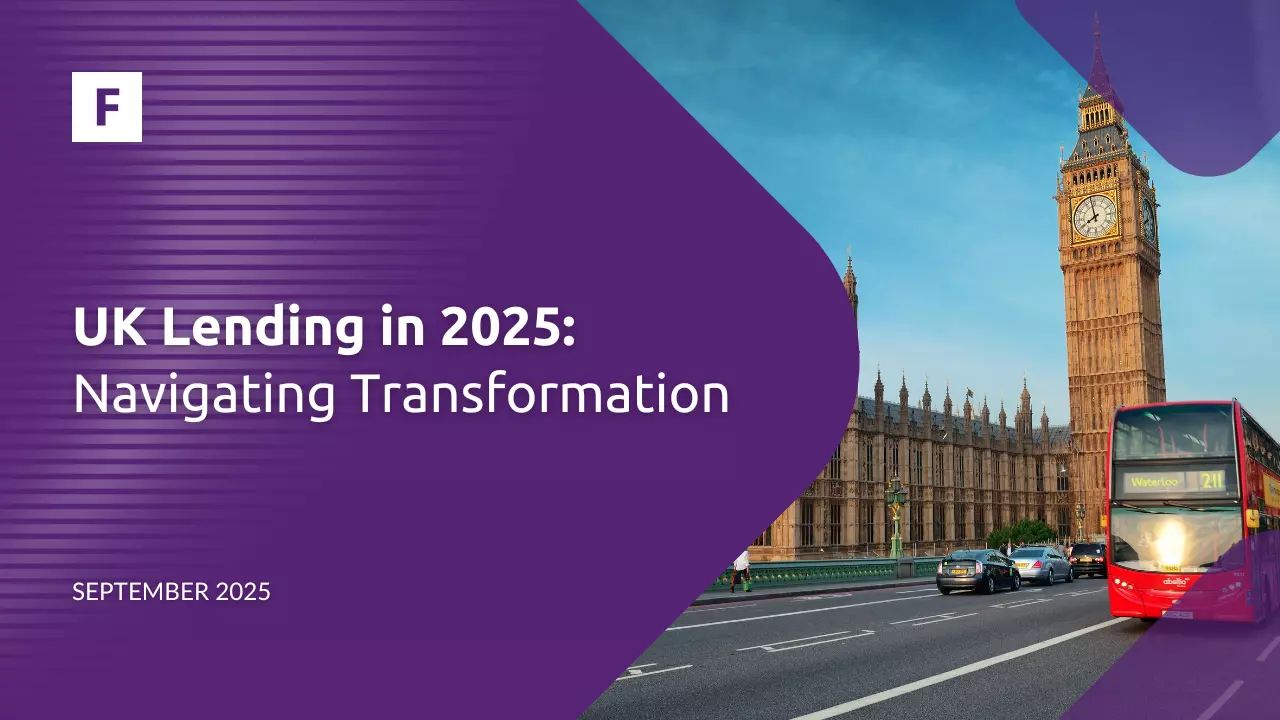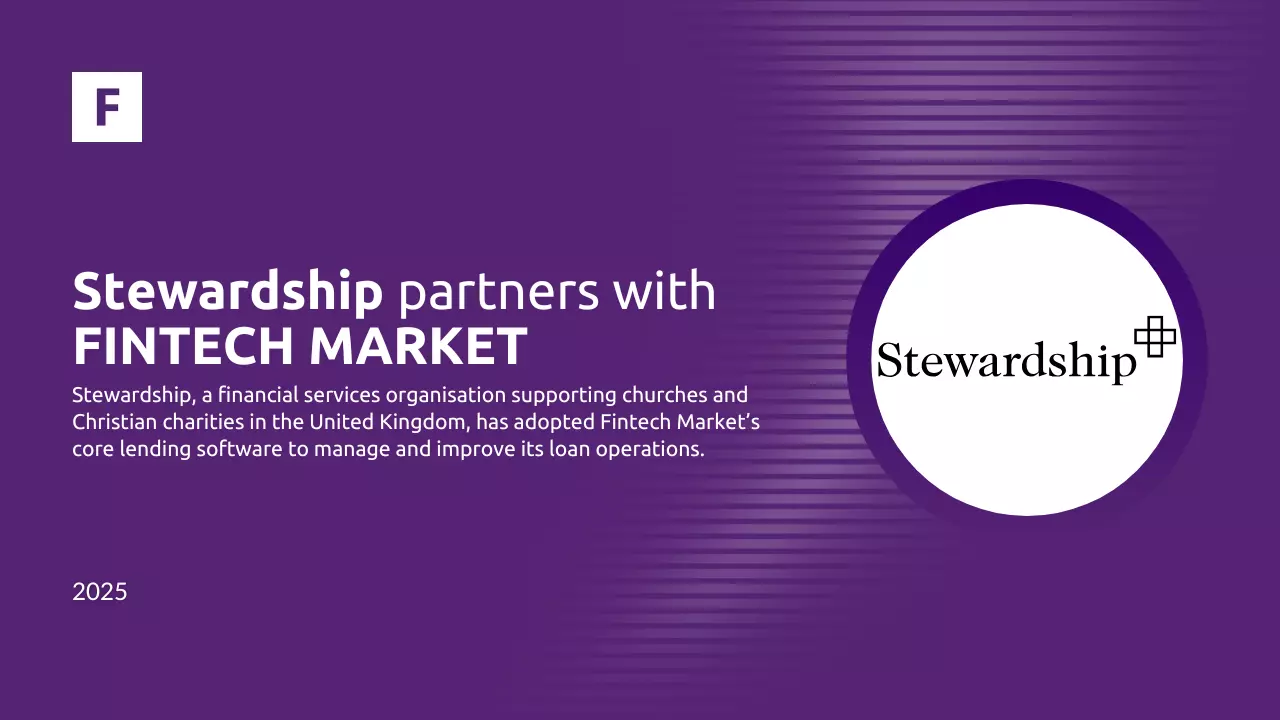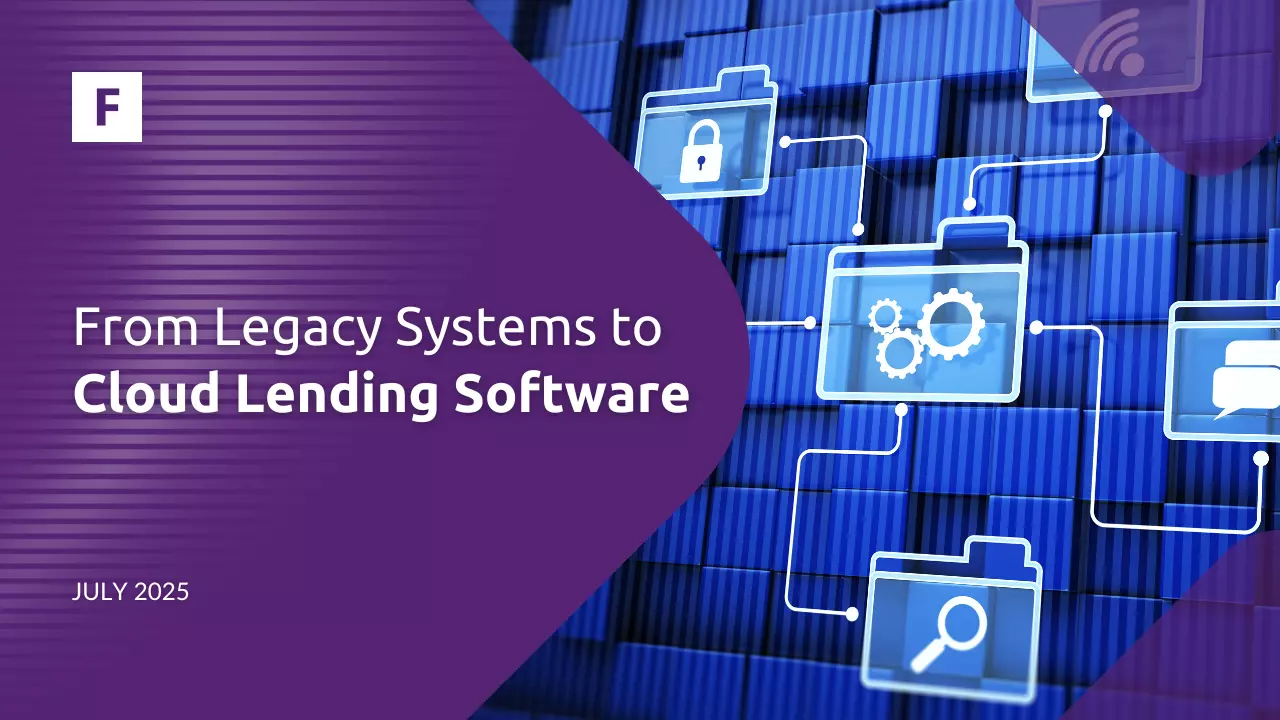The lending landscape is rapidly evolving, with digital platforms, automation, and advanced analytics transforming how loans are originated, managed, and delivered to customers.
However, one thing is sure -- technology, economic conditions, and regulations will shape the future of loan management. Key trends include the increased use of digital platforms and automation, such as machine learning in applications and underwriting, as well as enhanced communication between stakeholders.
These are the main key takeaways from this article:
Digital lending evolves
Data-driven decisions
Security and compliance
Open banking
These advancements will make loan management systems more efficient, transparent, and accessible. Modern loan origination software also plays a key role, enabling lenders to streamline application processes and maintain better oversight of their portfolios.
Data Analytics
Data analytics is transforming loan decision-making by replacing slow, manual reviews with automated, data-driven methods. Instead of relying solely on credit scores and income statements, lenders now combine financial, behavioral, and macroeconomic data to build a more comprehensive picture of borrowers. This shift enables faster, more accurate, and fairer lending decisions.
Advanced tools, such as machine learning, decision trees, and neural networks---often integrated into credit decisioning software and a decision engine---help detect patterns, assess risk dynamically, and even flag potential fraud.
Real-time data integration further strengthens the process by verifying financial information instantly, reducing fraud risks, and allowing lenders to adjust risk profiles as borrower situations change.
For customers, this means quicker approvals and more personalized loan products, along with proactive communication that builds trust and loyalty. Still, challenges persist regarding data privacy, regulatory compliance, algorithmic bias, and data accuracy.
This transformation is already visible in key areas of the market. One example of this shift is consumer lending, where digital lending platforms now allow individuals to apply for and manage loans entirely online using advanced lending software.
Another example is credit lines, which provide borrowers with flexible access to funds up to a set limit, rather than a one-time loan. Modern platforms, such as Fintech Market's Credit Line software, utilize real-time data and machine learning models to dynamically adjust credit limits based on changing borrower behavior and risk profiles.
Small and medium-sized enterprises (SMEs) are increasingly turning to digital lending platforms for fast, flexible financing. Our SME Loan software streamlines the application and approval process, offering tailored loan products that meet the unique needs of growing businesses. It leverages credit decisioning software and a decision engine to ensure accurate and fair credit assessments.
The future of loan processing lies in striking a balance between these risks and innovation---achieving efficiency, transparency, and customer satisfaction while upholding fairness and responsibility.
Machine Learning
Among these innovations, machine learning stands out as a powerful driver of change, enabling lenders to automate decisions, uncover hidden patterns in borrower behavior, and improve both speed and accuracy in loan management systems.
Loan approval prediction powered by machine learning offers a wide range of benefits for financial institutions. By analyzing large volumes of historical and behavioral data, models can enhance the accuracy of creditworthiness assessments, thereby reducing the risk of defaults and strengthening the overall portfolio quality.
Automating the approval process with loan origination software not only accelerates decision-making but also enables lenders to handle larger volumes of applications at lower operational costs. This creates a more efficient system that delivers faster results for borrowers while saving resources for institutions.
Purchase financing is another growing area where automation and analytics play a key role. Platforms like Fintech Market's Purchase Financing software allow customers to split payments for goods or services into manageable installments. At the same time, lenders benefit from automated credit checks and fraud detection powered by credit decisioning software.
For businesses looking to optimise working capital, factoring has emerged as a vital financial solution that leverages automation and real-time data. FTM's Factoring software helps companies to improve cash flow by automating invoice financing and accounts receivable management through integrated lending software.
Improved Communication
Communication plays a key role in loan processing, both in interactions with borrowers and within internal teams. Even after a loan is closed, ongoing communication with borrowers is crucial for maintaining strong relationships, addressing questions and concerns during the repayment period, and ensuring a seamless experience.
Proactive outreach can also help prevent delinquency by ensuring borrowers stay informed and supported throughout the process.
Equally important is internal communication among lending staff. Precise coordination between loan officers, underwriters, processors, and other team members ensures that everyone is aligned and working efficiently toward the common goal of accurately and on time closing loans.
Strong communication practices, both external and internal, ultimately contribute to smoother operations, better borrower experiences, and more reliable loan servicing outcomes.
As communication becomes increasingly central to the loan processing process, new technologies are reshaping how lenders and borrowers interact. Traditional systems often left customers frustrated by slow responses and complex processes.
Now, AI-powered chatbots and voice agents offer a smoother experience, providing instant eligibility checks, product recommendations, reminders, and other support at any hour.
The adoption of these tools is significant: all of the top 10 commercial banks in the U.S. now use chatbots of some kind.
For lenders, AI-driven communication means lower support costs, better lead qualification, and fewer drop-offs in the application process. For borrowers, it means faster answers, less paperwork, and a more responsive experience.
By combining strong external communication (with borrowers) and internal coordination (among staff), and by adding these AI tools to loan origination software and loan management systems, financial institutions can improve both operational efficiency and customer satisfaction.
Green Loans
As climate concerns shape financial markets, green loans are becoming an essential bridge between economic growth and environmental sustainability.
After a slowdown, the sustainable finance market is regaining momentum, with growing interest in green loans and sustainability-linked loans (SLLs). Green loans are typically limited to projects with measurable environmental benefits, whereas SLLs tie financing to performance targets, such as energy efficiency, renewable energy use, or governance improvements.
As Holly Faulkner of RBS International explains, "The benefit of this is dual-sided, as the cost of the facility decreases in line with these goals being met, while the client simultaneously achieves milestones such as reducing their carbon footprint, improving gender equality at board level, and demonstrating strong corporate governance."
Although ESG activity slowed during recent market uncertainty, demand is rebounding. James Hamelin of RBS International notes: "As the market begins to normalise again, I would fully expect ESG to move up the agenda, with a focus on ESG becoming the norm in the alternative investment space."
In 2024, over 20% of private capital fundraising has been allocated to ESG-labelled funds, with infrastructure-focused ESG funds accounting for 32%. The market is also evolving with hybrid green/SLL products and a shift toward transition financing. As Rahel Haque at NatWest highlights, "The majority of assets in the real economy are not green, so there is a sizable opportunity in moving assets from 'brown' to 'green'."
Data Privacy
With the rise of digital lending platforms, protecting sensitive borrower data has become a top priority for lenders. Loan management systems handle sensitive personal details, including bank accounts, income records, and application documents, making them prime targets for cybercriminals. Threats like hacking, malware, phishing, and insider misuse can lead to identity theft or financial fraud.
As loan management becomes more digital, financial institutions face growing pressure to comply with strict data protection and lending regulations. Frameworks such as the General Data Protection Regulation (GDPR) in the European Union and the California Consumer Privacy Act (CCPA) in the United States require lenders to handle personal data with transparency, consent, and accountability.
Beyond data protection, evolving rules around fair lending, anti-money laundering (AML), and sustainability-linked finance are transforming the way loans are structured and monitored.
Non-compliance can result in heavy fines, reputational damage, and loss of customer trust, making regulatory technology (RegTech) and proactive compliance strategies essential.
Fintech Market's Mortgage software not only streamlines the home lending process---from online applications to credit assessment and repayment---but also integrates data protection and compliance features.
By automating approval workflows, integrating with property valuation services, and ensuring the secure handling of sensitive borrower information, the platform enables lenders to meet regulatory requirements while providing a faster, safer, and more efficient experience for customers.
Open Banking
By enabling secure data sharing, open banking helps lenders simplify loan processing and deliver more tailored financial solutions. It also enhances payments, facilitates real-time decision-making, and promotes innovative services, including account aggregation, automated reconciliation, and instant lending.
Solutions like Fintech Market's E-Wallet software integrate with loan origination software and lending software to enable instant disbursements, automated repayments, and real-time balance tracking.
The global market is growing fast, with open banking transactions projected to exceed $330 billion by 2027. While its benefits are clear---greater transparency, lower costs, and stronger collaboration between banks and fintechs---challenges remain. Security risks, inconsistent regulations, and integration complexities necessitate that businesses strike a balance between innovation and careful risk management.
Recap
As the lending industry evolves, technology and automation are transforming the way loans are processed, approved, and managed. Tools like credit decisioning software and decision engines, along with Fintech Market's solutions, improve efficiency, compliance, and data security. Open banking and AI-driven solutions further streamline processes, creating a transparent, customer-focused lending ecosystem.
